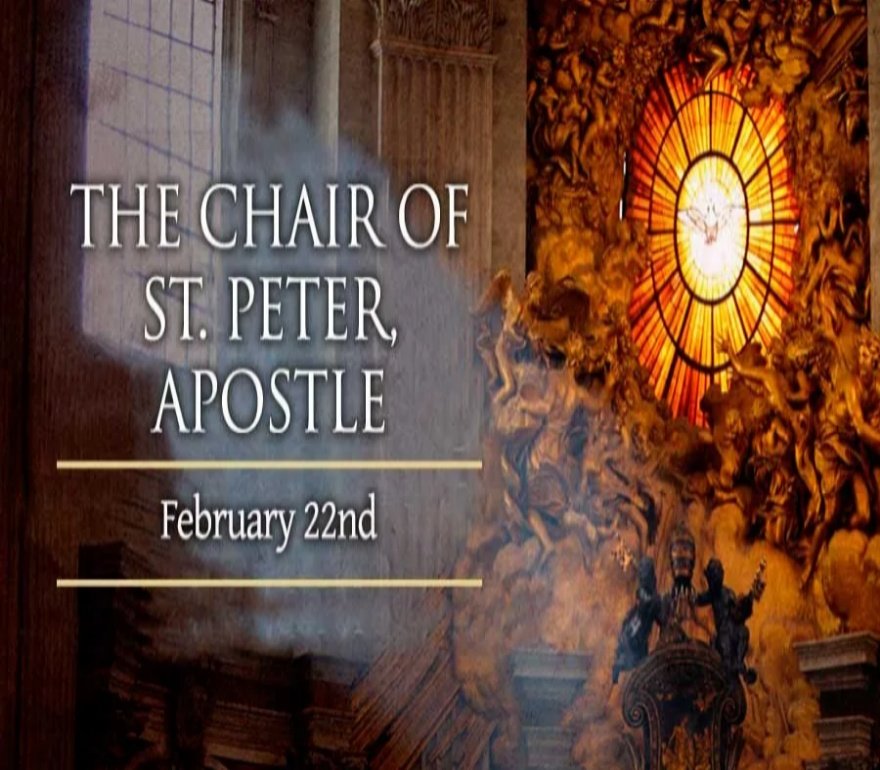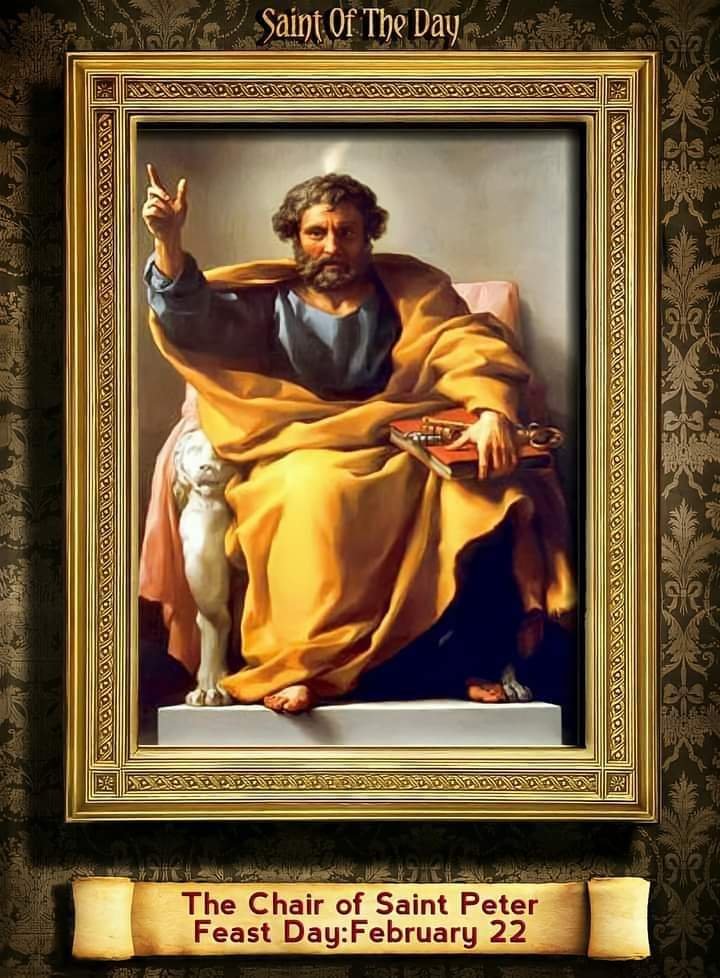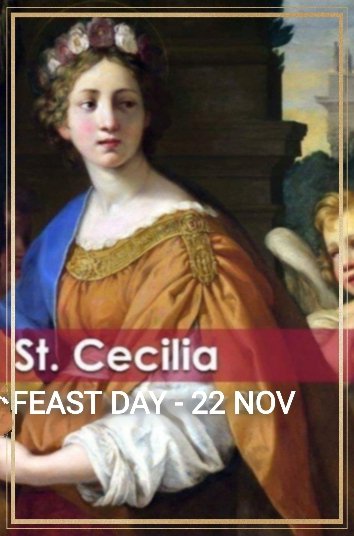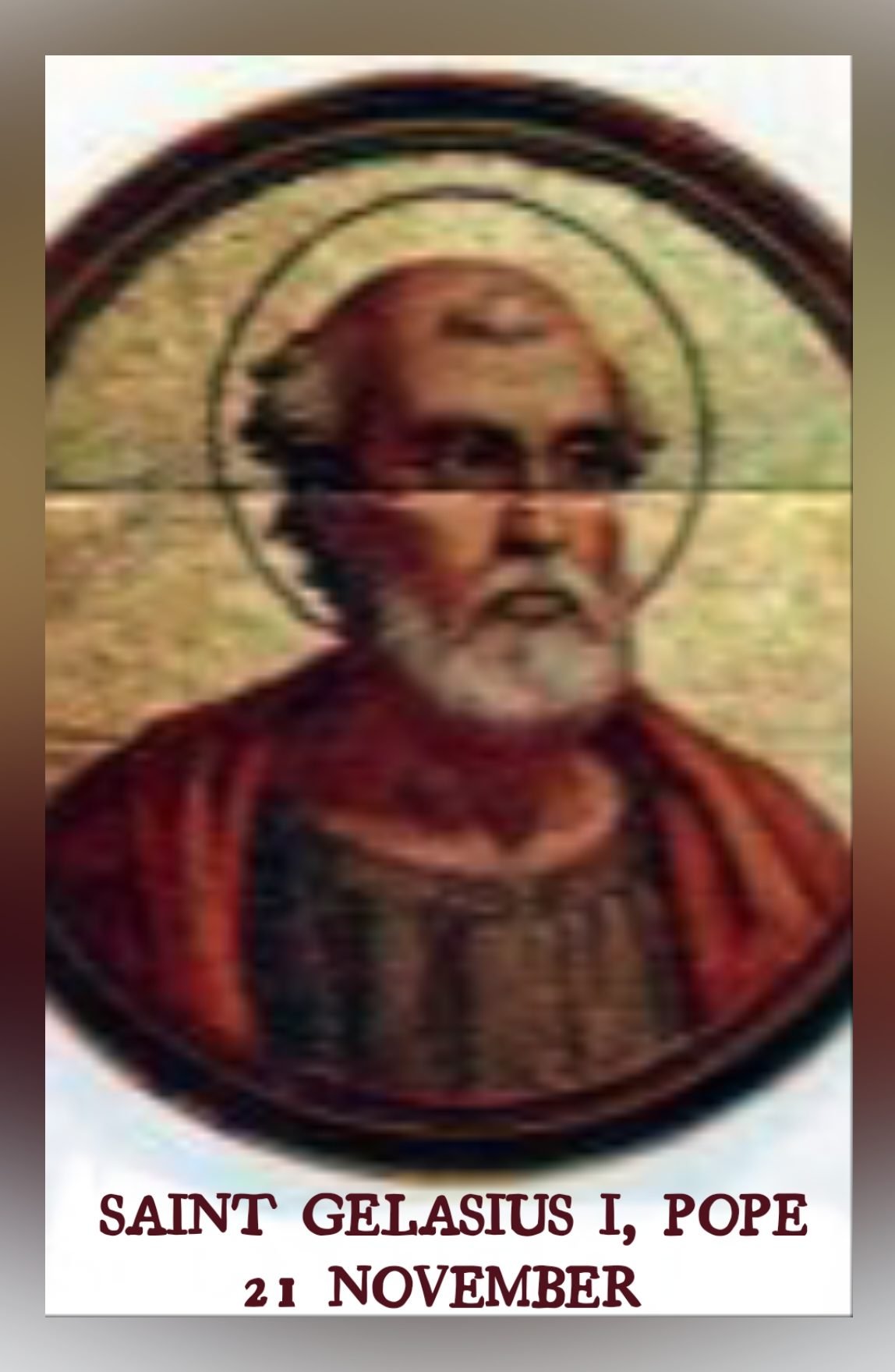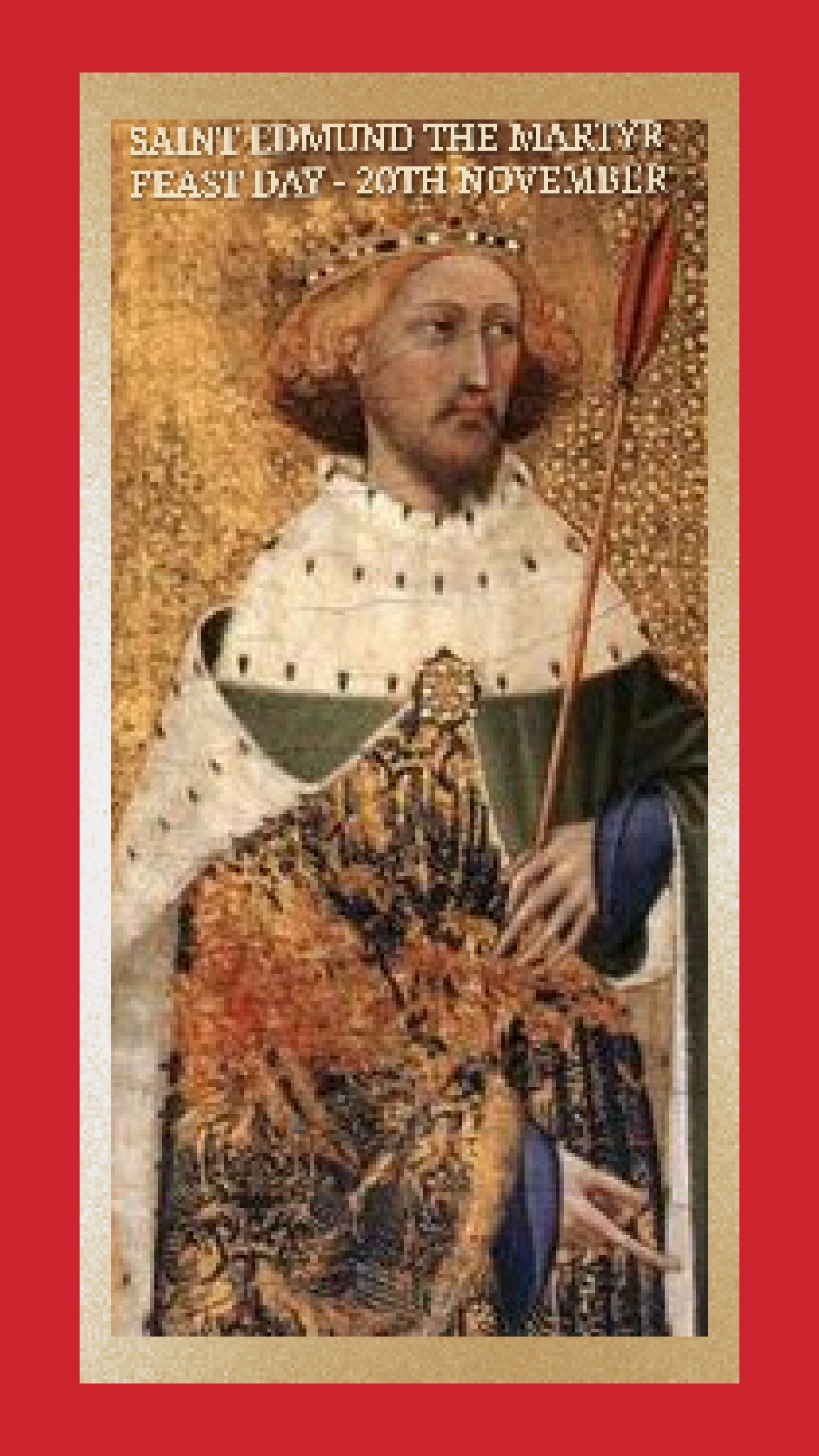
Day Seven of Lent – A Lowly Servant of the Lord
February 21, 2024
1 Peter 2:9-10
February 22, 2024FEAST OF THE CHAIR OF SAINT PETER
FEAST DAY – 22nd FEBRUARY
The Chair of Saint Peter (Latin: Cathedra Petri), also known as the Throne of Saint Peter, is a relic conserved in St. Peter’s Basilica in Vatican City, the sovereign enclave of the Pope inside Rome, Italy. It is a wooden throne that tradition claims belonged to the Apostle Saint Peter, the leader of the Early Christians in Rome and first Pope.
It is enclosed in a sculpted gilt bronze casing designed by Gian Lorenzo Bernini between 1647 and 1653. In 2012, Pope Benedict XVI described the chair as a symbol of the special mission of Peter and his Successors to tend Christ’s flock, keeping it united in faith and in charity, without which the Church would splinter into numerous sects and divisions.
The reliquary, like many of the medieval period, takes the form of the relic it protects, i.e. the form of a chair. It is formed entirely of scrolling members, enclosing a coved panel where the upholstery pattern is rendered as a low relief of Christ instructing Peter to tend to His sheep. Large angelic figures flank an openwork panel beneath a highly realistic bronze seat cushion, vividly empty, and the relic is encased within.
The seat of the chair, is about one foot ten inches above the ground, and two feet eleven and seven-eighths inches wide; the sides are two feet one and one-half inches deep; the height of the back up to the tympanum is three feet five and one-third inches; the entire height of the chair is four feet seven and one-eighth inches. According to the examination made by Padre Garucci and Giovanni Battista de Rossi, the oldest portion is a plain oaken arm-chair with legs connected by cross-bars.
The use of the term chair in the feast day comes from the Latin term cathedra, meaning the seat of government. This object–known as the Cathedra Petri (Latin, “Chair of Peter”) located in the apse of St. Peter’s Basilica, is in the back of the chamber, behind the famous altar, on the far, back wall, below the the well-known, stained glass image depicting the Holy Spirit as a dove. In Matthew 16:15, Jesus asks the Twelve Apostles, “Who do you say that I am?”. The only response Jesus acknowledged was that of Peter, who said that Jesus was the son of the living God.
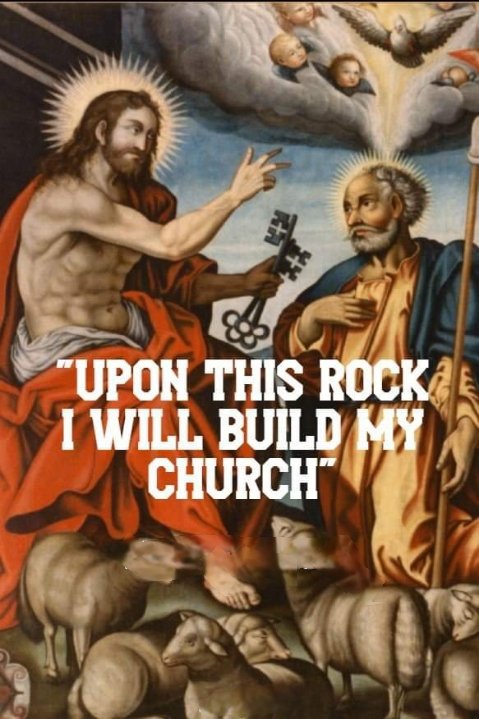
Peter is singled out among the apostles to be the rock of Christ’s Church on earth, “the gates of the netherworld shall not prevail against it”. After the Resurrection, Jesus confirms Peter’s primacy over the other apostles as well as authority over His Church. He gives Peter the keys to the kingdom, telling him: to “Feed my lambs…. Feed my sheep” (see Jn 21:15-17), meant to be passed on to each of his successors.
St. Peter quietly begins to take on the role assigned by Christ beginning in the Upper Room. The Church’s first ‘seat’ was the Upper Room, and it is likely that a special place was reserved for Simon Peter in that room where Mary, Mother of Jesus, also prayed with the disciples. Peter orchestrated the selection of Matthias to replace Judas, which was the first apostolic succession (Acts 1:15-26). Peter preached on that day of Pentecost and was so inspirational that 3,000 people were baptized after listening to him (Acts 2:41).
He was the first apostle to be given the grace to perform a miracle; curing the lame man at “the Beautiful gate” (Acts 3:1-10). Around A.D. 34, Peter went to Antioch and established there a seat, or chair, of government. Peter remained there for seven years, and the Church would acknowledge his work in Antioch by establishing the feast of St. Peter’s Chair in Antioch, celebrated on February 22 every year. Next, Peter went to Rome, the center of the civilized world. Peter’s efforts there would identify him as the first Bishop of Rome. In A.D. 68, he was crucified by Emperor Nero.
The cathedra is lofted on scrolling bars that appear to be effortlessly supported by four over-lifesize bronze Doctors of the Church: Western doctors Saint Ambrose and Saint Augustine of Hippo on the outsides, wearing miters, and Eastern doctors Saint John Chrysostom and Saint Athanasius on the insides, both bare-headed. The cathedra appears to hover over the altar in the basilica’s apse, lit by a central tinted window through which light streams, illuminating the gilded glory of sunrays and sculpted clouds that surrounds the window.
Above, on the golden background of the frieze, is the Latin inscription: “O Pastor Ecclesiae, tu omnes Christi pascis agnos et oves” (O Shepherd of the Church, you feed all Christ’s lambs and sheep). On the right is the same writing in Greek, “ΣΥ ΒΟΣΚΕΙΣ ΤΑ ΑΡΝΙΑ, ΣΥ ΠΟΙΜΑΙΝΕΙΣ ΤΑ ΠΡΟΒΑΤΙΑ ΧΡΙΣΤΟΥ”. Behind the altar is placed Bernini’s monument enclosing the wooden chair, both of which are seen as symbolic of the authority of the Bishop of Rome as Vicar of Christ and successor of Peter.
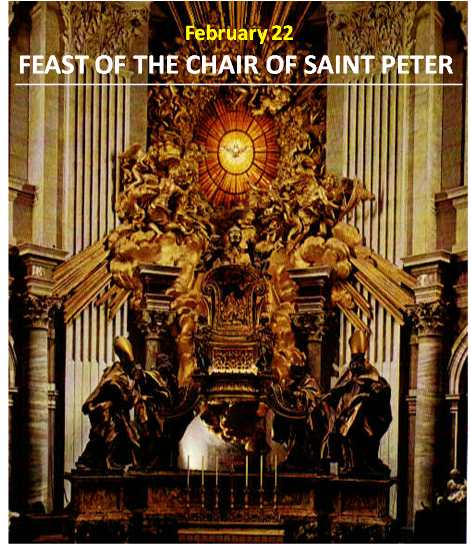
Early martyrologies indicate that two liturgical feasts were celebrated in Rome, centuries before the time of Charles the Bald, in honour of earlier chairs associated with Saint Peter, one of which was kept in the baptismal chapel of Old St. Peter’s Basilica, the other at the catacomb of Priscilla. The dates of these celebrations were January 18 and February 22. No surviving chair has been identified with either of these chairs.
According to historian Anton de Waal, although both feasts were originally associated with Saint Peter’s stay in Rome, the ninth-century form of the Martyrologium Hieronymianum associated the January 18 feast with his stay in Rome, and the February 22 feast with his stay at Antioch. The two feasts were included in the Tridentine Calendar with the rank of Double, which Pope Clement VIII raised in 1604 to the newly invented rank of Greater Double.
In 1960 Pope John XXIII deleted the January 18 feast from the General Roman Calendar, along with seven other feast days that were duplicate feasts of a single saint or mystery. The February 22 celebration became a Second-Class Feast. This calendar was incorporated in the 1962 Roman Missal of Pope John XXIII, whose continued use Pope Benedict XVI authorized under the conditions indicated in his motu proprio Summorum Pontificum. Traditionalist Catholics who use older calendars continue to celebrate both feast days. In the new classification of holy days introduced in 1969, the February 22 celebration has the rank of Feast.
The feast of the chair expresses the permanent presence of the apostle in the Magisterium of his successors. St. Peter’s chair, we could say, is the throne of truth which takes its origin from Christ’s commission after the confession at Caesarea Philippi. The magisterial chair also reminds us of the words spoken to Peter by the Lord during the Last Supper: ‘I have prayed for you that your faith may not fail; and when you have turned again, strengthen your brethren’.
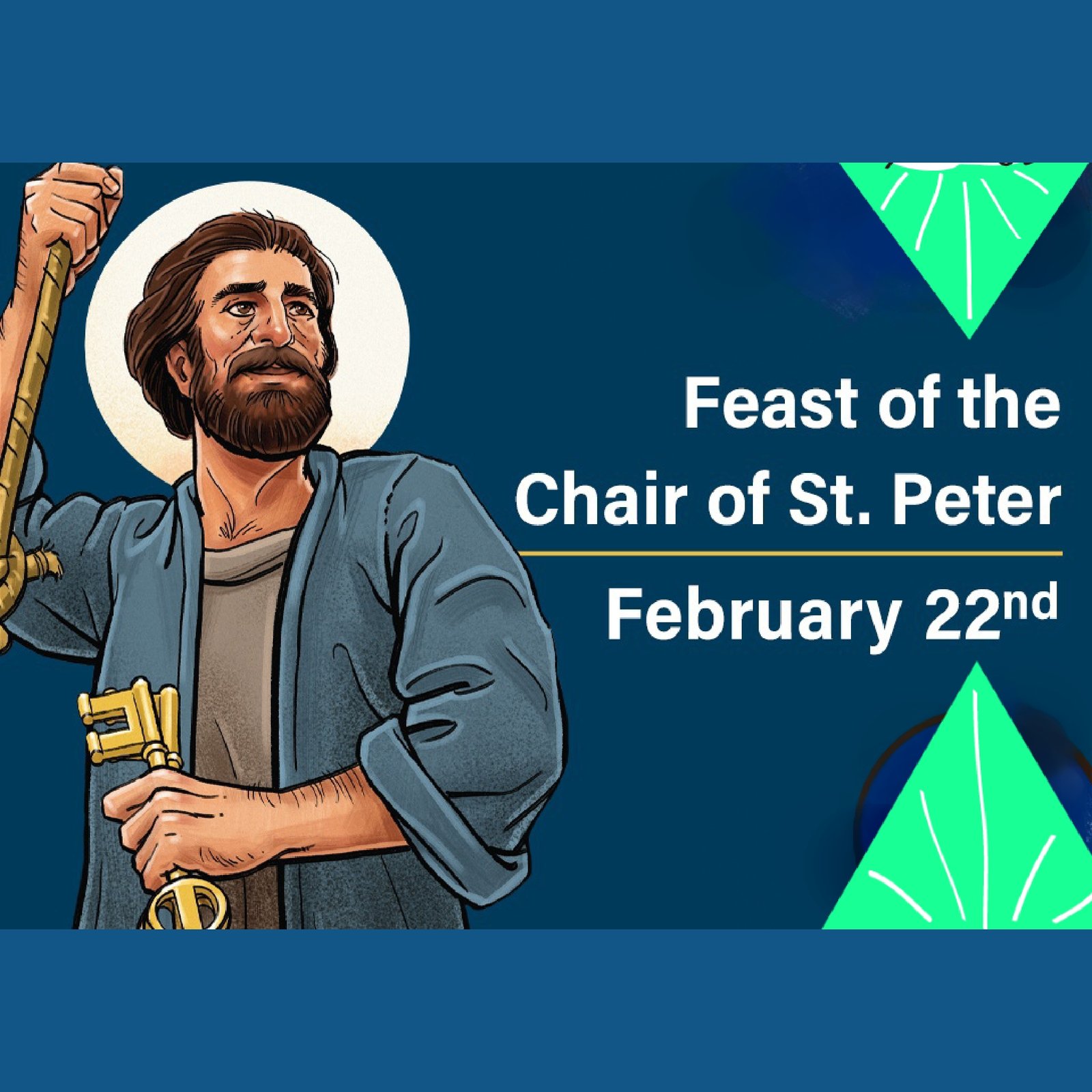
PRAYER
Today we celebrate the feast of the Chair of Saint Peter, rejoicing in the counsel of the Holy Spirit, in great gratitude to Jesus for the authority he shares with humans, and praying for the person of the Pope whom God has chosen to occupy the Chair of Saint Peter today.
Grant, we pray, dear God, that no evil overcomes us and that we stay fast to the rock of Saint Peter’s confession of faith.
Through our Lord Jesus Christ, your Son, who lives and reigns with you in the unity of the Holy Spirit, one God, for ever and ever. Amen
